|
What do we mean by intelligence?
The ‘intelligent’ label has been applied widely and with very liberal interpretation to a whole range of products or solutions and as a consequence many people are confused by exactly what is meant.
To consider what we mean by ‘intelligence’ the dictionary provides us with a good starting point, defining:
intelligence :
• having knowledge or information
•• the ability to learn, apply knowledge
intelligent :
• guided by reason, rational;
•• computerised functions able to modify action in the light of ongoing events
‘Cabling’ is usually considered as a standalone passive collection of cables and connectors, and in this context it is difficult to apply the idea of an “ability to learn”, yet alone “modify its action in the light of ongoing events”!
However if we consider the physical cabling infrastructure to be part of a larger working active network then it becomes easier to see how some of these definitions may apply. Even if it cannot actually ‘learn’, a good ‘intelligent solution’ should indeed meet these definitions by providing the network manager not only with additional knowledge and information about the physical connections within the network itself, but also the actual locations of attached devices etc. To really fulfil its potential, the best intelligent system can then be programmed to take specific actions (raise an alarm, disconnect power, take a picture) depending on any events detected on the network (e.g. changing a patchcord, plugging in a device, using a swipe card etc).
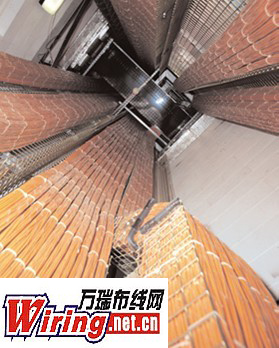
The potential scope of intelligent systems is therefore vast but as with most things, not all solutions bearing an ‘intelligent’ badge actually do the same thing.
Intelligent Patching versus Intelligent Infrastructure Management
The first point is to understand the difference between ‘Intelligent Patching’ and ‘Intelligent Infrastructure Management’ (IIM).
One of the original key features of intelligent systems evolved around the need for better management of the patching area. We are all too familiar with images of ‘patch cord spaghetti’, together with the resulting impact on maintenance and the difficulty of implementing moves, adds, and changes (MAC’s). And so ‘Intelligent Patching’ was born, focussed on ‘patch management’ in large networks where the high churn rate and large volume of MAC’s made it relatively easy to justify a return on investment (ROI).
But as we have already mentioned, the application of intelligence into the network means we can do a lot more than just look at the patching area. Whereas some solutions can only offer ‘Intelligent Patching’, others have been expanded to provide intelligent monitoring of the complete end-to-end channel from source to final user device. This is known as Intelligent Infrastructure Management or IIM.
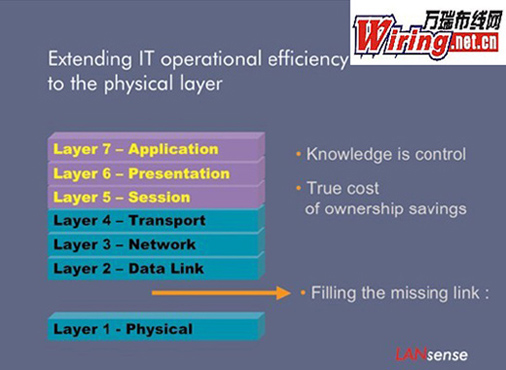
IIM provides the missing link between the logical network and the physical infrastructure. By doing so, information from existing network management tools can be combined with information about the physical cabling to provide a hugely powerful and versatile management tool.
By combining information from different systems in real time, operational managers can monitor, record, and take action on any event which occurs on the network. This could be a patch change in the comms room just like we see in intelligent patching, but could just as easily be connection or disconnection of a user terminal, the activation of a security alarm, a door controller, an IP camera, or a temperature sensor. Although these individual events can be identified without IIM, by including the physical data into the process, the precise location of the event or device is also known. The benefits are immediately apparent. If a problem is identified which needs personal involvement, the right level of technician can immediately be sent to the correct location without wasting expensive time looking for the problem in the first place. Asset management becomes a reality when the whereabouts of each asset can be tracked, identified, and even checked to see if it has the latest firmware upgrade.
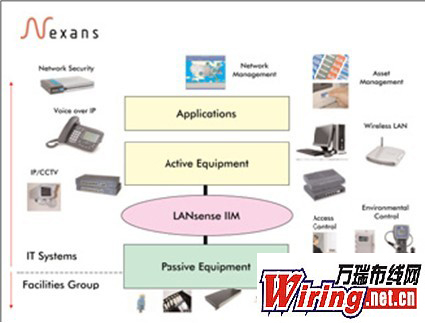
In addition, by linking together these disparate events into a central point, the overall system becomes much more powerful than the sum of the components. Different events can be programmed to deliver different responses – providing a system that really is ‘intelligent’ in line with our earlier definition.
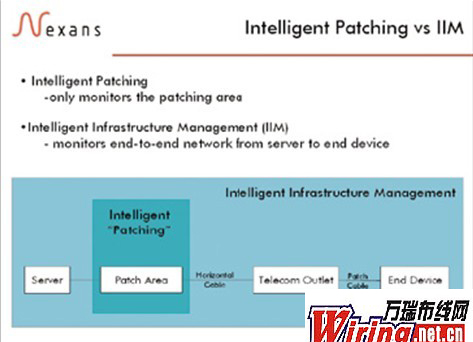
Of course simply installing ‘intelligence’ on its own will neither solve the spaghetti problem nor deliver ROI. Intelligence cannot replace tidy cable management – but it does at least mean that the location of each end of the cord is known! Similarly improving the productivity of maintenance staff will not deliver savings if the time saved is not utilised effectively for additional tasks. In order to obtain maximum benefit from an intelligent patching system it is also necessary to review the internal processes and procedures and adapt working practices as a result.
When and where is IIM an intelligent choice?
As with any purchasing decision, the basis of whether to choose an intelligent system or not, is one of cost versus benefit. However for intelligent systems there is an additional element - whose cost and whose benefit!
In general it is fair to say that the additional benefits and cost savings that will be achieved with an IIM solution will be realised by an organisations operational team whereas the upfront cost may well be budgeted from an entirely different department.
The other key issue is to recognise that different types of business or application will have different needs and perceive different benefits. Although this will always include a ROI justification, cost savings may manifest themselves in completely different ways.
Because IIM is so versatile compared with pure intelligent patching, it becomes much more difficult to provide a ‘rule of thumb’ indication of where it becomes viable based on scale alone. A much more consultative approach is necessary and it is very important to work closely with the end client to understand where the operational savings can be realised. This may be from improved maintenance productivity, reduced downtime meaning less lost business, enhanced security, or even reducing cost by enabling remote or outsourced maintenance.
IIM is also becoming an important tool to assist with regulatory compliance. In the aftermath of the Enron collapse in the USA, new regulations such as Sarbanes-Oxley mean that CEO’s can be held personally responsible and need to be able to demonstrate they are in control. IIM can help deliver that control by providing accurate, real time data, documentation, and history reports.
Enterprise
Large scale enterprise has been the historical market for IIM on the basis of cost savings obtained from fast effortless MAC’s and accurate asset management. Available switch ports can be identified and utilised saving on unnecessary additional switches. Network security is also improved. Typically it was only viable for installations of several thousand ports but as we shall see later, new hardware and software products have come onto the market which enables IIM to become feasible from as few as 500 points.
Data Centres

Although data centres do not generally suffer from a high number of MAC’s they are usually highly complex, densely packed infrastructures where reliability is of paramount importance. They also typically feature constant expansion in very limited timescales, thereby introducing increased risk of accidental disconnection, despite the need to provide 24/7 support for e-commerce transactions etc. IIM can assist by ensuring the regular expansion requirements make optimal use of any existing ports whilst maintaining accurate records of the complex array of interconnections. Security is also an important feature which can be improved. Heat and power supply are also critical operational issues for data centre managers and IIM can also be used to monitor, report, and alert on any abnormal events.
Converged Networks
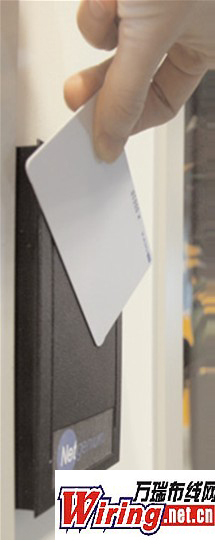
The accelerated transition of building management devices onto a converged IP platform introduces many benefits for integrated control. VoIP, IP CCTV, door access control, and intrusion detection devices can all be physically pinpointed, monitored, recorded, and controlled via a central interface, reducing the complexity of the physical cabling required to support them. Operational costs can be reduced by allowing any or all of these devices to be accessed remotely by a central facilities team. The individual tools also become far more powerful when linked together so for example, the activation of an intruder alarm can automatically trigger the nearest camera to zoom in and increase frame rate etc.
In all these cases, ROI calculations would be very different as in each case the potential savings would be realised in different areas and would make a different contribution to the overall project. However, independent post installation analysis on some of the earlier intelligent installations has demonstrated that the initial ROI estimates have proved to be fairly accurate, typically being around 3 years.
Product developments – an intelligent future
The LAN market is renowned for constant change and evolution so it should come of little surprise that the market for intelligent systems is following suit.
The main elements of an IIM solution consist of hardware (patch panels and patch cords), software, and analysers which detect port connectivity and feed the output to the software database. All of these elements are undergoing changes to make intelligence more affordable, more flexible, and more adaptable to a variety of different environments.
In particular, new software versions are available which are designed to provide a more ‘out of the box’ solution. By using a set of predefined reports requiring much less software customisation, simplified IIM solutions can be implemented at a substantially reduced cost.
Future proofing has been a common theme of the cabling industry but it is important to recognise that this is as much, if not more, about flexibility than MBits. Many users are seeing the potential for IIM but are looking to spread the upfront cost whilst maintaining the ability to add intelligence at a future date. To meet this demand, upgradeable panels are now available. These enable standard cabling to be installed in a first phase with no additional cost but can subsequently be upgraded simply by swapping the front plate of the panel and adding the analysers and software.
It is even possible to retrofit ‘intelligence’ to many existing 3rd party installations by means of adhesive sensor strips.
Summary & conclusion
Is IIM just a lazy substitute for a well managed system? One of the main challenges facing business today is managing change in an increasingly complex environment. Businesses need to improve reliability and security at a time when it is becoming almost impossible to achieve this manually. It is reported that an estimated 70% of connection failures are caused by human error. So in an ideal world a ‘well managed system’ which is accurately and diligently recorded could negate the need for ‘Intelligent Patching’. But when we look at the additional benefits of IIM over and above pure patching we see that technology can deliver massive advantages, with greater accuracy, and at lower cost, than a manual equivalent.
With convergence and complexity driving demand, and product developments constantly reducing costs making IIM more feasible in a wider variety of environments, then we should all be thinking more intelligently about our cabling.
|